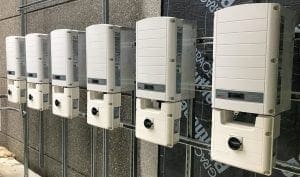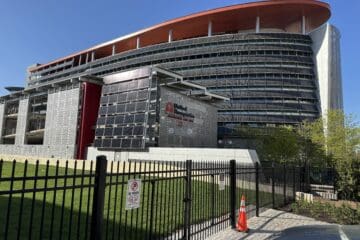Good preparation & step-by-step calculations will allow you create an effective budget for your commercial property
Years ago when I was working in New York at a property management company, there was a dreaded time of the year the district managers called ‘budget season.’ Each of them would have to prepare budgets for 5-6 Manhattan properties and review them with the company president by a certain date. The long hours would go on for weeks, meetings, reviews then eventual closed doors and don’t-disturb-unless-it’s-urgent sentiments would fly around in the usually relaxed office environment. When the work was done and they would emerge out of what sounded like a hellishly stressful experience that seemed to suck all their brain power, implementation would follow. Then after half a year of bliss the budget dates would start popping up on the planning calendars again, and the happy faces would drop to that same familiar budget season droll.
Whatever your disposition towards budgets, they are a crucial part of appropriate commercial property management, and ensure the smooth operations of any facility. When it comes to creating the building’s budget, breaking down the numbers in each category then calculating operating expenses and various revenue streams will help you get a handle on planning for the coming year. Here are some steps to take in the process:
- The first thing to figure out is the building’s Gross Potential Rental Income. This is the gross income the building would see if it is at full occupancy for the entire year, in other words what the income potential would be at the currently-priced rate per unit. This not only includes rent, but also miscellaneous income like parking fees, storage fees, vending machine income, and projected late fees (based on historical data).
- Calculate Expense Reimbursement, Recoveries and Pass Through Income. Typically, many commercial leasing agreements require the tenant to pay a portion of the building’s operating expenses, insurance and real estate taxes to decrease the burden on the owner/manager.
- Calculate the building’s Vacancy and Credit Loss. When looking at your occupancy, remember that any vacancies represent a loss in your potential income. Projecting out the length of time any given space will remain empty is difficult so if occupancy fluctuates throughout the years it’s always good to revisit the budget and update numbers in this category, as well as reworking subsequent budget formulas. You’ll also want to consider the fact that you may have tenants that will have difficulty fulfilling their rental obligations in the coming year. Given the current state of the economy, it’s important to stay on top of these potential income loss possibilities.
- Once you have calculated all these elements, you need to determine the Effective Gross Income. Although there are still some elements to consider, the EGI sets a baseline for your property’s budgeted income. The formula is as follows:
Effective Gross Income = Gross Potential Rental Income + Expense Reimbursements – Vacancy/Credit Loss + Miscellaneous Income
Read Also:
5. The next figure to calculate will be the building’s Operating Expenses. These cover basic expenses to keep the building functioning: utilities, water, internet/phone, landscaping and waste removal are some main examples. It’s important to note for waste removal and utility costs, build in a year over year price increase factor of 2-4% which is typically the increase you’ll experience in most areas. Maintenance and repair costs should also be factored in (tip: reserve a percentage of monthly income for repairs). Taxes & insurance, and finally building staff salaries are all part of the operating expenses.
6. Once you have figured out the building’s total annual operating expenses, you need to calculate the Net Operating Income– or the income you have after these ongoing baseline operating expenses are budgeted in. The formula for the NOI is as follows:
Net Operating Income = Effective Gross Income – Operating Expenses
7. From here, you want to subtract the proportional debt service from the Net Operating Income. The debt service is the property’s mortgage obligation. This will reflect the building’s effective available Cash Flow.
In the final stages of the budget preparation, consider whether any capital improvements will be needed for the coming year. These are typically expenses incurred in order to maintain functionality, safety, and desirable aesthetics. Additionally it’s recommended to set money aside in reserves in a monthly basis in anticipation of eventual capital improvements or emergency expenditures that could otherwise significantly impact the building’s future annual budget.
Cash Flow = Net Operating Income – Debt Service
Photo credit: Obi Onyeador






